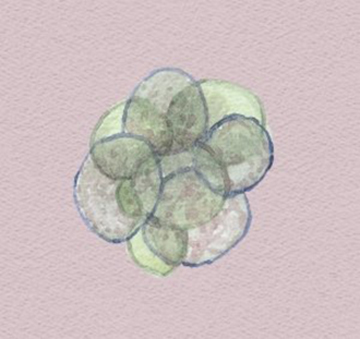
A comparison of the phases in IVF and ICSI treatment
1.- Ovarian stimulation in the patient is carried out by administering doses of hormones that stimulate ovarian function with the aim of achieving sufficient oocytes. The doses of the aforementioned hormones are personalised to each patient depending on her ovarian reserve and based on the results of antimullerian hormone levels in a blood test and a follicle count for each ovary using a vaginal ultrasound scan. Controlling each patient’s ovarian response is done over a series of vaginal ultrasound scans (an average of 3) and, in some cases, by checking oestradiol (the hormone produced by the ovary) levels in blood. Once the checks indicate that the ovary is ready, oocyte retrieval is scheduled. This period of ovarian stimulation lasts between 8 and 10 days in most women and does not affect the patient’s daily routine.
2.- Oocyte retrieval is carried out 36 hours following the last dose of medication. Brief and superficial sedation is required. In other words, the patient is put to sleep for around 10 to 15 minutes. During this short period of time and using an ultrasound guide, the liquid that has built up in the ovary follicles is suctioned. The liquid contains the oocytes that have been maturing during hormone stimulation. The partner’s sperm sample is taken or, in some cases (a woman who does not have a male partner or men with severe sperm abnormalities), the sperm bank is used (compatible donor). Once the oocytes have been retrieved, the patient is discharged around two hours later and will then need to rest at home until the following day when she can return to her normal daily routine.
3.- The result of fertilisation (day 1 of the embryo) is checked and documented by the embryologists in the in vitro fertilisation laboratory around 18 hours later. It is at this point that we know how many of the oocytes retrieved have been fertilised normally. In theory this should be the same as the number of available embryos.
4.- Over the next few days, the embryos are observed at pre-established periods and both embryo division (number of cells) and morphology data are recorded. The quality of each embryo is classified based on two parameters: division and morphology. Each embryo will have a different use. There will be good quality embryos, others that will undergo arrest and others that will go the full course but that are of poor quality.
5.- Last of all, 2 to 5 days after oocyte retrieval, embryo transfer is arranged. Where possible, we wait as long as possible because embryos go through ‘spontaneous selection’ as they evolve. Transfer is carried out with the patient in lithotomy position and, with the use of an abdominal ultrasound so that the cervix and endometrium can been viewed, a thin, flexible catheter is inserted into the cervix and the embryos are deposited inside the uterus. The patient does not need to be sedated, the procedure is not painful and, in fact, it is similar to a routine gynaecological check-up. Once transfer has been completed, the patient rests for a while and is discharged with some simple indications. The most important of these is that she take the hormone treatment that her doctor has prescribed.
6.- The pregnancy blood test is done 9 to 12 days later, depending on each case, and the patient is given the result on the very same day. If the result comes back positive (pregnancy), the patient is given an appointment for 2 weeks later so that initial progress of the pregnancy can be checked with an ultrasound scan. If the result is negative, the patient is given an appointment at the clinic once the case has been reviewed and the options for appropriate checks and therapies are explained.
The process described above lasts around the same as a cycle in the ovary (around 4 weeks). As mentioned above, the average number of days for ovarian stimulation (the number of days hormones are taken) is between 8 and 10. During that time, the patient goes to a total of 5 to 6 appointments: 3 ultrasound scans, oocyte retrieval, transfer and the pregnancy blood test. The only day when rest at home is recommended is on the day of oocyte retrieval. The rest of the process is compatible with the patient’s daily routine.
Dr Lydia Luque, gynaecologist at Instituto Bernabeu.
